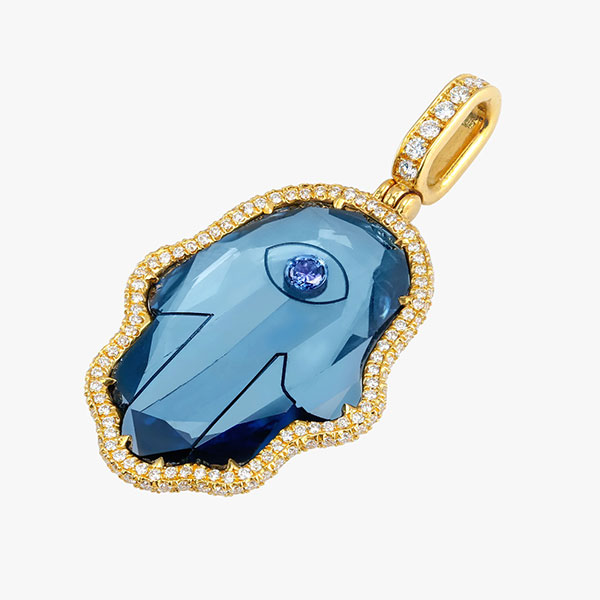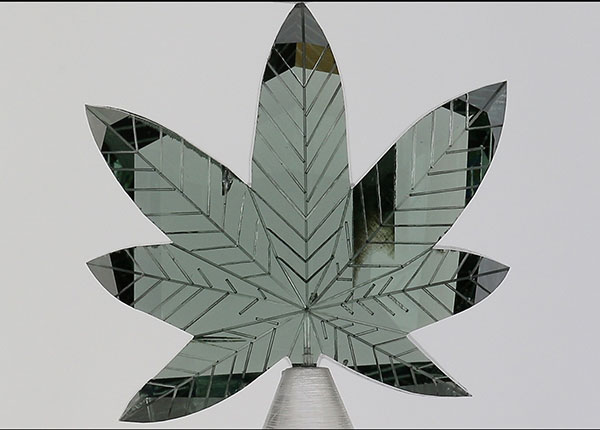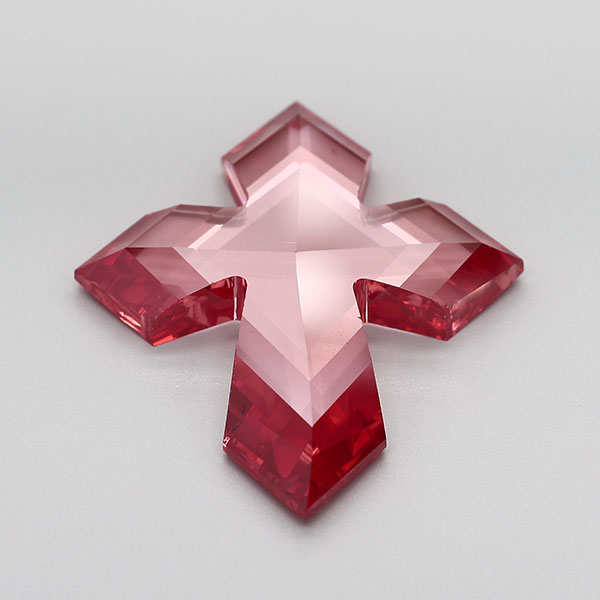
DEBBIE AZAR’S EXPERT TAKE ON LAB GROWN DIAMONDS:THE FANTASTICAL WORLD OF LAB-GROWN DESIGN, BY JCK

Much of the talk among retailers of lab-grown diamonds (LGD) centers on value for money—the fact that consumers are able to get bigger lab-grown diamonds at lower prices than their mined counterparts. But Ben Hakman, managing director of Fire Diamonds, a company that specializes in designing unique diamond cuts using cutting-edge laser sawing and laser marking technologies, thinks the industry has it all wrong.
“There’s a consumer who wants lab-grown diamonds, and it has nothing to do with natural,” he tells JCK. “They’re interested in getting diamonds that are not available in natural.”
“I have been designing diamond cuts for 20 years, but until LGD we had no control over the diamond size and color,” Hakman says.

Fire Diamonds’ 8.96 ct. vivid green lab-grown diamond shaped like a cannabis leaf
As growers begin to experiment with size, coloration, and cutting techniques, the universe of lab-grown diamonds in fanciful shapes and colors is expanding. Debbie Azar, president of Gemological Science International, says the nature of the CVD process, in which diamonds are grown on flat wafer seed crystals, lends itself to bolder, more experimental designs.
“We’re seeing CVD diamonds in increasingly artistic shapes because laser cutting has advanced what diamond cutters can do, and laboratory-grown material is less risky to experiment with because of the cost factor,” she says.
“When it comes to color, there are no limits!” Azar adds. “Diamond growers are tapped into the science of diamond color and can create whatever color they’d like based on the impurities they add, as well as any post-growth treatments such as irradiation, HPHT processing, and annealing. We have even seen laboratory-grown diamonds that have been intentionally color-zoned to give an ‘ombre-like’ effect!”

Fire Diamonds’ 10.16 ct. orangey-red cross-shape lab-grown diamond
Hakman, an industry veteran who crossed over from natural diamonds into the lab-grown category about seven years ago, said even more than creating rare cuts, his focus is on creating high-quality, unique colors, and on “giving the consumer value and an experience they couldn’t have had before, because in the past 20 years anything that was color enhanced was really bad quality.”
“What we’re doing is only the beginning,” he added.
Debbie Azar is the president and co-founder of GSI.
Article from JCK – March 2022.
About GSI:
Gemological Science International (GSI) is the only major gemological organization established in the 21st century. Founded in 2005 in New York City, it has grown to become one of the largest gemological entities in the world with laboratory facilities spanning four continents. Utilizing cutting-edge processes and proprietary technologies, along with a commitment to the highest ethical standards and practices, GSI provides manufacturers and retailers globally with a wide range of gemstone identification and grading services. The company is committed to advancing gemological research and offers gemological educational programs for trade professionals and the general public through its state-of-the-art research center.


